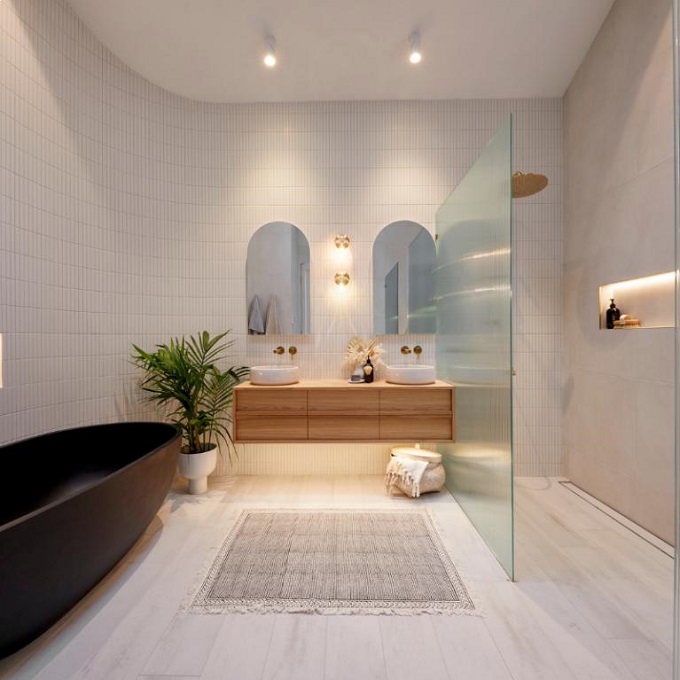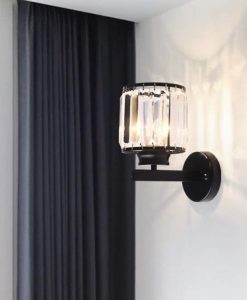
Introduction
Kitchen lighting is an essential aspect of any kitchen design. It not only serves a functional purpose by providing adequate lighting for cooking and food preparation, but it also plays a crucial role in creating the right ambiance and atmosphere in the space. The right lighting can transform a dull and uninspiring kitchen into a warm and inviting space that is both functional and aesthetically pleasing. In this article, we will explore the importance of kitchen lighting and discuss the different types of lighting available to help you create the perfect lighting scheme for your kitchen.
Understanding the Importance of Kitchen Lighting
Kitchen lighting serves multiple purposes in a kitchen. Firstly, it provides task lighting, which is essential for performing various tasks such as chopping vegetables, reading recipes, and cooking. Task lighting should be bright and focused to ensure that you have adequate visibility while working in the kitchen. Secondly, kitchen lighting helps create a welcoming atmosphere for entertaining guests. Whether you are hosting a dinner party or having friends over for a casual gathering, the right lighting can set the mood and create a warm and inviting ambiance. Lastly, kitchen lighting adds style and functionality to the space. By choosing the right light fixtures and positioning them strategically, you can enhance the overall design of your kitchen and make it more visually appealing.
Types of Kitchen Lighting: Which One is Right for You?
There are three main types of kitchen lighting: ambient lighting, task lighting, and accent lighting. Ambient lighting provides overall illumination to the space and is usually achieved through overhead fixtures such as chandeliers or recessed lights. Task lighting, as mentioned earlier, is focused on specific work areas such as countertops and stovetops to provide ample light for cooking and food preparation. Accent lighting is used to highlight specific features or objects in the kitchen, such as artwork or architectural details.
Examples of ambient lighting include chandeliers, pendant lights, or recessed lights installed in the ceiling. Task lighting can be achieved through under-cabinet lighting, recessed lights, or track lighting installed above work areas. Accent lighting can be achieved through the use of LED strip lights, idmhome pendant lights, or spotlights.
Layering Your Kitchen Lighting for Optimal Results
Layering different types of lighting is essential to achieve optimal results in your kitchen. By combining ambient lighting, task lighting, and accent lighting, you can create a well-balanced and visually appealing lighting scheme. Start by installing overhead ambient lighting to provide overall illumination to the space. Then, add task lighting in specific work areas such as countertops and stovetops to ensure that you have adequate visibility while cooking. Finally, incorporate accent lighting to highlight specific features or objects in the kitchen.
To effectively layer your kitchen lighting, consider using a combination of overhead lighting, under-cabinet lighting, and accent lighting. This will ensure that you have ample light in all areas of your kitchen and create a visually appealing and functional space.
Choosing the Right Bulbs for Your Kitchen Lighting
Choosing the right bulbs for your kitchen lighting is crucial to achieve the desired effect. There are several types of light bulbs available, including incandescent, halogen, fluorescent, and LED bulbs. Each type has its pros and cons.
Incandescent bulbs are the traditional choice and provide warm and soft light. However, they are not energy-efficient and have a shorter lifespan compared to other types of bulbs. Halogen bulbs are similar to incandescent bulbs but are more energy-efficient and have a longer lifespan.
Fluorescent bulbs are energy-efficient and have a longer lifespan than incandescent bulbs. However, they produce a cooler light that may not be suitable for all kitchen designs. LED bulbs are the most energy-efficient option and have a long lifespan. They also come in a variety of color temperatures, allowing you to choose between warm or cool light.
When choosing bulbs for your kitchen lighting, consider the color temperature and brightness. Warm light (around 2700-3000 Kelvin) creates a cozy and inviting atmosphere, while cool light (around 5000-6000 Kelvin) provides a brighter and more energizing feel. The brightness of the bulbs should be sufficient for the specific task or area they are illuminating.
The Role of Dimmer Switches in Kitchen Lighting
Dimmer switches are a great addition to any kitchen lighting scheme as they allow you to adjust the brightness of the lights according to your needs. They offer several benefits, including energy savings, mood enhancement, and flexibility.
By using dimmer switches, you can reduce energy consumption by lowering the brightness of the lights when full illumination is not required. This can result in significant energy savings over time. Dimmer switches also allow you to create different moods and atmospheres in your kitchen by adjusting the brightness levels. Whether you want a bright and energizing space for cooking or a soft and cozy ambiance for entertaining, dimmer switches can help you achieve the desired effect. Lastly, dimmer switches provide flexibility as they allow you to adjust the lighting based on the time of day or the task at hand.
To use dimmer switches effectively, consider adjusting the lighting based on the time of day and the task you are performing. For example, during the day, you may want brighter lights for cooking and food preparation, while in the evening, you may prefer softer and dimmer lights for a more relaxed atmosphere.
Accent Lighting: Adding Style and Functionality to Your Kitchen
Accent lighting is an excellent way to add style and functionality to your kitchen. It can be used to highlight specific features or objects in the kitchen, such as artwork or architectural details. Accent lighting adds depth and visual interest to the space and can create a focal point in your kitchen design.
There are several ways to incorporate accent lighting in your kitchen. LED strip lights are a popular choice as they can be installed under cabinets or along the edges of countertops to create a subtle and stylish effect. Pendant lights are another option and can be used to highlight a kitchen island or dining area. Spotlights can be used to draw attention to specific objects or features, such as a collection of cookbooks or a decorative backsplash.
When using accent lighting, consider the placement and intensity of the lights to achieve the desired effect. Experiment with different types of fixtures and positions to find what works best for your kitchen design.
Task Lighting: Illuminating Your Workspaces
Task lighting is essential in a kitchen as it provides ample light for cooking and food preparation. It ensures that you have adequate visibility while working in specific areas such as countertops, stovetops, and sinks.
There are several ways to incorporate task lighting in your kitchen. Under-cabinet lighting is a popular choice as it provides focused light directly onto the countertop, making it easier to see while chopping vegetables or preparing meals. Recessed lights can also be used to provide task lighting in specific work areas. Track lighting is another option and allows you to adjust the position of the lights to suit your needs.
When using task lighting, consider the placement and brightness of the lights. Position them in areas where you need the most light, such as above the stove or sink. Ensure that the brightness of the lights is sufficient for the specific task you are performing.
Ambient Lighting: Creating a Welcoming Atmosphere in Your Kitchen
Ambient lighting is crucial in creating a warm and inviting atmosphere in your kitchen. It provides overall illumination to the space and sets the mood for entertaining guests or spending time with family.
There are several ways to incorporate ambient lighting in your kitchen. Chandeliers are a popular choice as they add elegance and style to the space while providing ample light. Pendant lights can also be used to create a cozy and intimate atmosphere, especially when installed above a kitchen island or dining area. Recessed lights are another option and can be installed in the ceiling to provide a soft and diffused light.
When using ambient lighting, consider the size and layout of your kitchen. Choose fixtures that are proportionate to the space and position them strategically to ensure even illumination throughout the room. Dimmer switches can also be used to adjust the brightness of the ambient lighting according to your needs.
Maximizing Natural Light in Your Kitchen
Natural light is a valuable asset in any kitchen design. It not only reduces energy costs by providing free illumination during the day but also improves mood and well-being. Natural light creates a sense of openness and connection with the outdoors, making your kitchen feel brighter and more spacious.
There are several ways to maximize natural light in your kitchen. Start by ensuring that your windows are clean and unobstructed to allow maximum sunlight to enter the space. Consider using light-colored curtains or blinds that allow natural light to filter through while still providing privacy. If possible, install skylights or light tubes to bring in additional natural light from above.
When designing your kitchen layout, consider the placement of windows and doors to maximize natural light. Position work areas such as countertops and sinks near windows to take advantage of natural daylight while performing tasks.
Tips for Installing Kitchen Lighting: Dos and Don’ts
When installing kitchen lighting, there are several tips to keep in mind to ensure a successful outcome. Firstly, it is recommended to hire a professional electrician for any electrical work involved in installing or replacing light fixtures. They have the knowledge and expertise to ensure that the installation is done safely and according to code.
Secondly, consider the placement of light fixtures in relation to other elements in your kitchen design. For example, if you have a large island, consider installing pendant lights above it to create a focal point. Avoid placing light fixtures too close to cabinets or other obstacles that may obstruct the light or create shadows.
Lastly, avoid common mistakes such as using the wrong type of bulb for a specific fixture or not considering the overall design of the space. Ensure that the bulbs you choose are compatible with the fixtures and provide the desired color temperature and brightness. Consider the style and theme of your kitchen when selecting light fixtures to ensure that they complement the overall design.
Conclusion
In conclusion, kitchen lighting is an essential aspect of any kitchen design. It not only provides functional lighting for cooking and food preparation but also plays a crucial role in creating the right ambiance and atmosphere in the space. By understanding the different types of kitchen lighting available, such as ambient lighting, task lighting, and accent lighting, you can create a well-balanced and visually appealing lighting scheme. Remember to layer your lighting for optimal results, choose the right bulbs for your needs, and consider incorporating dimmer switches for flexibility. With careful planning and consideration, you can transform your kitchen into a well-lit and inviting space that is both functional and aesthetically pleasing.






